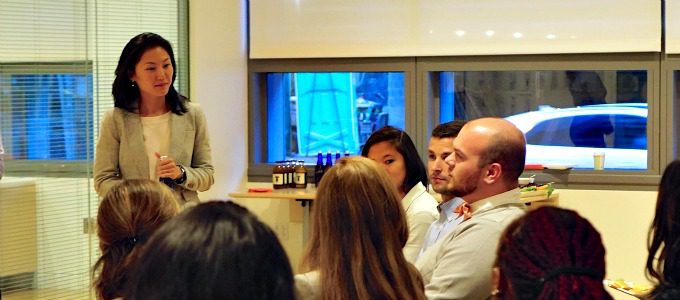Predictions suggest that by 2025 more than 70 percent of the workforce in North America will consist of employees from the millennial generation. This vibrant cohort of current and future employees has left many of today’s leaders scratching their heads and leaping towards popular water cooler myths rather than the truth.
As much as it may be difficult for today’s Boomer or Gen X leaders to accede, adaptation to Gen Y’s unique predispositions is necessary, and we simply are not ready.
As learning organizations prepare for the influx of Gen Y into the workforce, it is critical to re-think the topography of the learning landscape. What works for today’s employee, will not register with Gen Y and with the generation after them, Gen Z.
The future of learning for millennials includes a much wider plethora of variegated activities and delivery methods. It is incumbent upon leaders to lead the learning transformation towards a “Maximized Assimilation of Knowledge” approach. This may sound complex, but it is actually a basic arrangement of blended learning systems derived from the three cornerstones of transferable learning: learning style adaptation, application of on-the-job learning and incorporation of personalized and social learning.
The first key component to Maximized Assimilation of Knowledge, learning style adaptation, is of key importance to transform learning and training approaches that will appeal to Gen Y. Placing employees into the learning mode that lines up with their natural learning style sets them up to absorb and retain knowledge. The learner takes in information without being forced to filter through an undesirable learning style. However, all training needs to be developed to suit all learning styles.
The second key component to Maximized Assimilation of Knowledge is application of on-the-job learning. Learning material needs to reflect information that will be used most during normal job functions. There is a tendency to present a plethora of knowledge which the student will rarely need day-to-day. In reality, for those job elements that arise only sporadically, Gen Y fairs better simply if they are shown where to research critical knowledge needed to handle these situations. By taking the all-encompassing data dump approach to learning, learning leaders may indirectly create significant knowledge gaps.
The third key component to Maximized Assimilation of Knowledge for the Gen Y learner is incorporation of personalized and social learning. Learning functions waste a great deal of time and effort on learning development that repeats or incorporates material already widely available on the Internet or other media. It makes more sense not to create training that rewrites information readily accessible in the public domain, or to prohibit social media use during office hours. Limited access to available knowledge creates redundancy and unnecessary work in the instructional design process that can be cost-intensive.
Gen Y also has taken peer and social learning to a new level. They want and need to immediately connect with others. They want to test and challenge new ideas – not just with a trainer or manager, but also with their peers. So, companies will need to invest part of their learning efforts into informal platforms to encourage employee social learning experiences.
Each year organizations invest millions into outdated learning programs. As we consider the speed of change, how we prepare Gen Y becomes a paramount concern in the learning environment. Relying on outmoded practices will result in significant drag on ROI.
Creating and designing for the learning needs in a changing learning and generational landscape should become priority-one for learning organizations globally. Gen Y is changing the DNA of corporate learning. Adopting a Maximized Assimilation of Knowledge approach is one step to achieve the necessary transformation.















